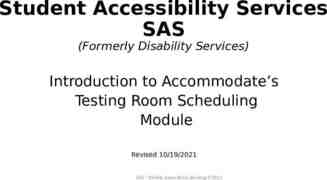BASELINE PREDICTORS OF THREE TYPES OF ANTIRETROVIRAL THERAPY
9 Slides120.50 KB
BASELINE PREDICTORS OF THREE TYPES OF ANTIRETROVIRAL THERAPY (ART) ADHERENCE: A 2-YEAR FOLLOW-UP Nilsson Schönnesson L.1 Diamond P.2 Ross MW. 2 Williams M. 2 Bratt G. 1 Gay Men’s Health Clinic, Infectious Disease Clinic, Karolinska University Hospital, Department Karolinska Institute/South Hospital, Stockholm, Sweden 2 Center for Health Promotion and Prevention Research, School of Public HealthUniversity of Texas Health Science Center at Houston, Houston, Texas, U.S.A. 1
Purposes: 1. to measure patient ART adherence to dose, schedule, and dietary instructions over a two-year period; 2. to identify predictors of the three types of adherence
Potential predictors of three types of adherence (dose, schedule, and dietary instructions) Intra-personal factors Inter-personal factors Extra-personal factors Psychological factors 1. Psychological distress Depressive symptoms; Anxiety symptoms; Hopelessness Support Patient-doctor relationship; Satisfaction with social support; External medication demands Sociodemographics Gender; Age; Sexual preference; Partner status; Education; Work; Years since HIV diagnosis 2. Stressors HIV-stress; Life stress Biomedical factors CD4; HIV-RNA; AIDS diagnosis 3. Coping Resiliency; Avoidance Medication regimen NRTI PI; NNRTI NRTI; NNRTI NRTI PI; NRTI Number of pills; Number of drugs; Time being on ART; Medication adverse side effects Cognitive factors HIV severity; ART health concerns; ART benefits; Adherence self-efficacy
Table 1 Baseline demographic and medication regimen characteristics of patients (n 144) Characteristics % Gender Female Male 22 78 Age 29-38 39-48 49-58 59 27 41 24 8 Sexual preference Homosexual Bisexual Heterosexual 64 4 32 Education High school Some college University degree 8 30 62 Steady job Yes No 63 37 Partner status Partner Single 59 41
Table 1/cont. Year of HIV diagnosis 1983-1986 1987-1992 1993-2000 Protease inhibitor-based regimen Yes No 31 32 37 60 40 Time on ART 1 year 2 years 3 years 4 years 5 years 3 7 12 47 31 Total number of HIV drugs 2 3 4 4 40 44 13 3
Table 2 Proportion of patients classified as 100% adherent at baseline and at each of the seven follow up visits Baseline T1 T2 T3 T4 T5 T6 T7 Dose 89 89 82 86 90 92 91 93 Schedule 63 70 76 76 77 75 69 78 Dietary instructions 43 72 69 77 72 83 76 80
Table 3 Proportion of patients classified as Dose Schedule Dietary instructions 100% adherent all visits 61 39 37 Non adherent at least at one visit 39 61 63 1 6 16 Never 100% adherent
Table 4 Logistic regression analysis on predictors of schedule adherence B ART health concerns S.E. Sig. OR -1.490 .565 .008 .225 Adherence self-efficacy 1.449 .613 .018 4.259 HIV stress 1.430 .511 .005 4.177 Life stress -2.287 .824 .006 .102 HIV disease severity .662 .266 .013 1.939 Social networtk medication demands .563 .269 .036 1.756 -.668 .265 .012 .513 Health care medication demands
ACKNOWLEDGMENT Our gratitude goes to: those women and men who participated in the study; the nurses at Gay Men’s Health Clinic, Söder Hospital and HIV Clinic, Karolinska Hospital for administrating the questionnaires; the Swedish Foundation for Health Care Sciences and Allergy Research; Department of Research, Education, and Development, Stockholm City Council; the Magn Bergvall’s Foundation; the Swedish Physicians against AIDS Research Foundation, and the National Institute on Drug Abuse, USA, R03 DA 12328.














